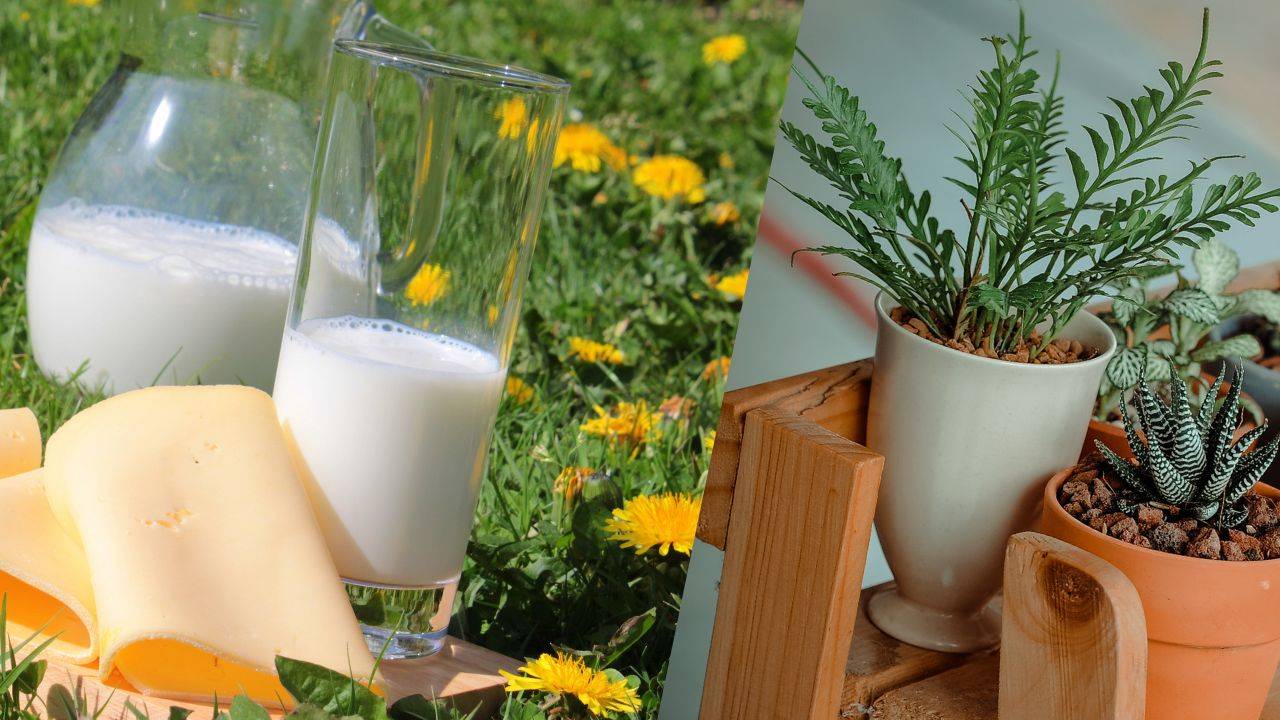
Food wastage is no less than a sin in a country where thousands of people die of hunger each year. To combat this issue and promote a more responsible approach to consumption, practical kitchen hacks become invaluable tools.
In the following article, we will unveil a set of ingenious tips that can help you repurpose expired milk for the benefit of your plants, reducing waste while nourishing nature.
Why Use Spoiled Milk?
Before we dive into the how, let's understand why spoiled milk can be beneficial for your plants:
Nutrient-Rich- Spoiled milk contains essential nutrients like calcium, which is vital for plant growth and development.
Acidic Properties- The natural acidity of spoiled milk can help lower the pH of alkaline soils, making them more suitable for certain plants.
Eco-Friendly- Using spoiled milk as fertilizer reduces food waste and minimizes the environmental impact of disposal.
Tips to Use Expired Milk
Here are a few ways you can use expired milk:
Using Spoiled Milk for Greener Leaves
The lactic acid and beneficial bacteria found in spoiled milk act as natural fertilizers, enriching the soil with essential nutrients like calcium and nitrogen. Dilute the spoiled milk with water in a 1:1 ratio and gently spray it on your plant's leaves. This eco-friendly approach not only promotes greener and shinier foliage but also minimizes food waste. Remember, moderation is key to avoid over-fertilization and potential harm to your plants. Embrace this sustainable and cost-effective method for a healthier, more radiant garden.
Using Spoiled Milk as Fertilizer
-
Dilute the Milk: Mix the spoiled milk with water. A common ratio is 1 part milk to 2 parts water. This dilution prevents the milk from becoming too concentrated, which could harm your plants.
-
Apply at the Base: Pour the diluted milk mixture directly at the base of your plants, ensuring it soaks into the soil.
-
Frequency: Use spoiled milk as a fertilizer every two to four weeks during the growing season. Don't overdo it; moderation is key.
-
Water After Application: After applying the milk mixture, water your plants as usual to help the nutrients penetrate the soil.
Benefits of Using Spoiled Milk
By using spoiled milk, you can expect several benefits for your plants:
-
Improved Growth: The nutrients in spoiled milk will encourage healthier, lusher growth.
-
Stronger Roots: Calcium in milk aids in root development, making plants more resilient.
-
Soil Health: Spoiled milk can improve soil structure and enhance microbial activity.
-
pH Regulation: It can help balance soil pH, making it more suitable for a broader range of plants.
Precautions and Considerations of Using Spoiled Milk
While using spoiled milk as fertilizer can be beneficial, keep these precautions in mind:
-
Don't Overdo It: Excessive milk application can lead to unpleasant odours and attract unwanted pests. Use it in moderation.
-
Avoid on Acidic Soil: If your soil is already acidic, using spoiled milk may further lower the pH, which can harm some plants.
-
Monitor for Mold: If you notice mold growth on the soil's surface, reduce the frequency of milk application.
Thus, don't discard that spoiled milk just yet. Instead, put it to good use as a natural fertilizer for your plants. By following the simple steps outlined in this article, you can contribute to healthier, more vibrant gardens and houseplants while reducing food waste. Give your plants the calcium and nutrients they need and watch them thrive with the help of this eco-friendly gardening hack.









